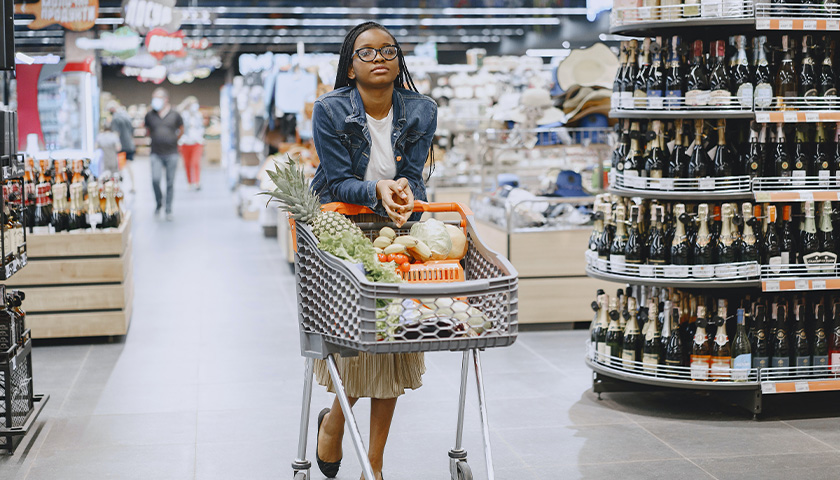by Casey Harper
While overall inflation has slowed from its rapid pace earlier this year, grocery prices continue to rise, putting Americans in a pinch, according to newly released federal inflation data.
The U.S. Bureau of Labor Statistics released the monthly Consumer Price Index report, which showed prices rose 0.1% in November, less than experts predicted, contributing to a 7.1% increase in the past 12 months.
“The indexes for shelter, communication, recreation, motor vehicle insurance, education, and apparel were among those that increased over the month,” BLS said. “Indexes which declined in November include the used cars and trucks, medical care, and airline fares indexes.”
Energy prices declined, but shelter prices rose significantly.
“The index for shelter was by far the largest contributor to the monthly all items increase, more than offsetting decreases in energy indexes,” BLS said. “The energy index decreased 1.6 percent over the month as the gasoline index, the natural gas index, and the electricity index all declined.”
Food prices, though, drove the increase as well.
“The food index increased 0.5 percent over the month with the food at home index also rising 0.5 percent,” BLS said.
Grocery prices have risen 12% in the past 12 months.
“Four of the six major grocery store food group indexes increased over the month. The index for fruits and vegetables increased 1.4 percent in November, after falling 0.9 percent in October,” BLS said. “The index for cereals and bakery products rose 1.1 percent over the month while the index for dairy and related products increased 1.0 percent in November. The index for nonalcoholic beverages rose 0.7 percent in November, after rising 0.5 percent last month.”
This data comes on the heels of wholesale producer price data from BLS which found the price of some goods skyrocketed in November but overall producer prices rose only 0.3%, though that was more than experts expected. Overall, producer prices rose 7.4% in the last twelve months.
“The November advance in prices for final demand goods was led by a 38.1 percent jump in the index for fresh and dry vegetables,” BLS said. “Prices for chicken eggs; meats; canned, cooked, smoked, or prepared poultry; and tobacco products also moved higher. Conversely, the gasoline index fell 6.0 percent. Prices for diesel fuel, residential natural gas, and primary basic organic chemicals also declined.”
– – –
Casey Harper is a Senior Reporter for the Washington, D.C. Bureau of The Center Square. He previously worked for The Daily Caller, The Hill, and Sinclair Broadcast Group. A graduate of Hillsdale College, Casey’s work has also appeared in Fox News, Fox Business, and USA Today.
Photo “Woman Shopping for Groceries” by Gustavo Fring.





